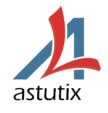There are many ways to make eLearning courses interesting and engaging. However, do all of them make learners confident in applying their learning on-the-job? This is the crux of learning effectiveness isn’t it? Proof of the pudding…
Well, there are a few possible techniques to address this challenge – for instance, introducing practice as an element forming part of the course, or including a simulation, and in some cases using “reflection” as a technique. Research shows that “reflection” or “thoughtful deliberation” facilitates learning. And in the process, the learner makes an effort to simulate application of the knowledge gained from the course. Reflective thinking promotes retention, deep learning experiences and improved work performance.
There are many places where reflective practices can be infused in online training courses.
Here are a few of them:
At the start
Offering reflective questions at the very start is a great way to grab learners’ attention and make them think. Nothing helps learners learn better than to start with a set of reflective “did you know?” questions about a topic. Reflective thinking also helps enormously in assimilating the upcoming content as the mind is primed. For example, for a course on supply chain management, questions that make the learner structure what they already know about SCM at the start keep them hooked to the content that follows.
Through case studies and scenarios
This is another great potential area to practise reflection.For instance, consider a case study that involves a conversation between a life insurance agent and a prospect. Rather than just representing this as a conversational scenario, and the learner passively having to watch it, involve the learner in the narration as it is getting explained. Why not integrate some open-ended questions into the running case study and present them for learners to “pause and ponder?”
Here are a few sample questions:
- What will your initial questions be to the prospect after you have gone through the necessary documents?
- Now that you know your prospect, could you figure out the policy that works best for them?
- What would you do if you were in the client’s position?
Towards the end of a course
This is another area to introduce “opportunities for reflection” to expose learners to on-the-job situations. This also helps to consolidate and apply knowledge or skills acquired during the course. For a training program that talks about dealing with common workplace issues, having questions like “What were your initial thoughts about workplace challenges?” followed by “What actions will you take to address such issues?” creates sticky learning experiences.
In essence, reflective practices in online training encourage critical thinking in learners and make the training learner-centric.

